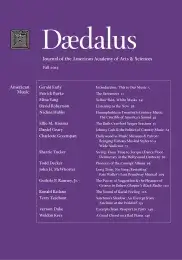Pioneers of the Concept Album
The introduction of the long-playing record in 1948 was the most aesthetically significant technological change in the century of the recorded music disc. The new format challenged record producers and recording artists of the 1950s to group sets of songs into marketable wholes and led to a first generation of concept albums that predate more celebrated examples by rock bands from the 1960s. Two strategies used to unify concept albums in the 1950s stand out. The first brought together performers unlikely to collaborate in the world of live music making. The second strategy featured well-known singers in songwriter-or performer-centered albums of songs from the 1920s, 1930s, and 1940s recorded in contemporary musical styles. Recording artists discussed include Fred Astaire, Ella Fitzgerald, and Rosemary Clooney, among others.
After setting the speed dial to 33 1/3, many Americans christened their multiple-speed phonographs with the original cast album of Rodgers and Hammerstein’s South Pacific (1949) in the new long-playing record (LP) format. The South Pacific cast album begins in dramatic fashion with the jagged leaps of the show tune “Bali Hai” arranged for the show’s large pit orchestra: suitable fanfare for the revolution in popular music that followed the wide public adoption of the LP. Reportedly selling more than one million copies, the South Pacific LP helped launch Columbia Records’ innovative new recorded music format, which, along with its longer playing time, also delivered better sound quality than the 78s that had been the industry standard for the preceding half-century.
Arriving at the midpoint of the twentieth century, the LP initiated a long-format era in American popular music that lasted just over a half-century. The introduction of the compact disc (CD) in the early 1980s, with its even longer playing time (seventy-four minutes or more), advanced the postwar bias . . .
